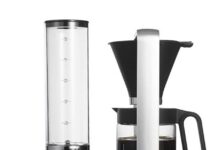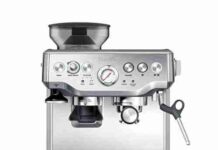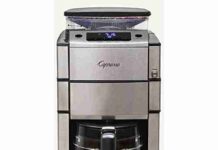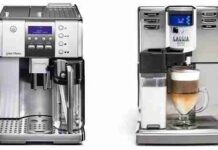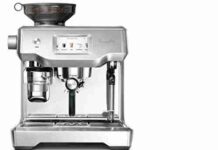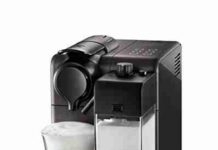Have you ever wondered why your beloved coffee maker seems to take forever to brew your morning cup of joe? Well, in this article, we will explore the fascinating reasons behind this seemingly never-ending wait. From the intricacies of the brewing process to the scientific principles at play, we will uncover the secrets behind why your coffee maker takes its sweet time to brew. So grab a fresh cup of coffee and join us as we unravel the mystery behind this everyday morning ritual.
Heat Up Time
Size of the Coffee Maker
The size of the coffee maker can have an impact on the heat up time. Larger coffee makers often have a higher capacity and require more time to heat up the water to the optimal brewing temperature. Smaller coffee makers, on the other hand, may heat up more quickly as they have a smaller volume of water to heat.
Temperature Setting
The temperature setting on a coffee maker can also affect the heat up time. Some coffee makers offer adjustable temperature settings, allowing users to select their desired brewing temperature. If a higher temperature is set, it may take longer for the water to reach that temperature, thus extending the heat up time.
Type of Heating Element
The type of heating element used in a coffee maker can play a role in the heat up time. Coffee makers generally use either a metal heating element or a heating coil. Metal heating elements tend to heat up more quickly compared to heating coils, resulting in a shorter heat up time. However, it is important to note that the type of heating element can also impact the overall brewing process and coffee quality.
Quality of Water
Water Temperature
The temperature of the water used in the coffee maker can affect the brewing time. If the water temperature is too low, it will take longer for the water to reach the optimal brewing temperature, resulting in a longer brew time. It is recommended to use water at around 195-205°F (90-96°C) for optimal coffee extraction and taste.
Water Flow Rate
The flow rate of water in the coffee maker can also impact the brewing time. If the water flow rate is too slow, it can prolong the brewing process. On the other hand, if the water flows too quickly, it may not have enough contact time with the coffee grounds, resulting in under-extracted coffee. Finding the right balance of water flow rate is crucial for achieving the ideal brewing time.
Mineral Content in Water
The mineral content in water, commonly referred to as water hardness, can affect the brewing time. Water with a high mineral content can slow down the brewing process due to mineral buildup in the coffee maker’s pipes and components. Regular descaling and cleaning of the coffee maker can help maintain an optimal brewing time.
Bean Size and Quality
Grind Size
The grind size of the coffee beans used in the coffee maker can impact the brewing time. Different brewing methods require different grind sizes, and using the wrong grind size can result in either over-extracted or under-extracted coffee. Finer grind sizes, such as those used for espresso, generally require a shorter brewing time, while coarser grind sizes, such as those used for French press, require a longer brewing time.
Bean Roast Level
The roast level of the coffee beans can affect the brewing time and flavor profile. Darker roasted beans tend to have a longer brewing time compared to lighter roasted beans. This is because darker roasted beans have a more porous structure, which requires more time for water to extract the desired flavors. Lighter roasted beans, on the other hand, have a denser structure and require a shorter brewing time.
Bean Freshness
The freshness of the coffee beans can also impact the brewing time. Freshly roasted and ground beans tend to have a more vibrant flavor and aroma, but they may require a slightly longer brewing time compared to older beans. This is because fresh beans release more carbon dioxide during the brewing process, which can slow down the extraction process. However, the difference in brewing time between fresh and older beans is generally minimal.
Brewing Method
Drip Brewing
Drip brewing is one of the most common brewing methods used in coffee makers. It involves pouring hot water over coffee grounds contained in a filter. The water slowly drips through the coffee grounds and into a pot or carafe. Drip brewing typically takes a bit longer than other methods due to the slower flow rate of water. However, it allows for a larger batch of coffee to be made at once.
French Press
French press brewing involves steeping coffee grounds in hot water for a certain period of time and then pressing the plunger to separate the coffee grounds from the brewed coffee. This method generally requires a longer brewing time compared to drip brewing, as it relies on the steeping process to extract flavors from the coffee grounds. It is known for producing a full-bodied and robust cup of coffee.
Espresso
Espresso brewing is a more concentrated and faster brewing method compared to drip brewing and French press. It involves forcing hot water through finely ground coffee at high pressure. The brewing time for espresso is typically much shorter, ranging from 20 to 30 seconds. This rapid extraction process results in a highly concentrated and flavorful espresso shot.
Amount of Coffee
Coffee to Water Ratio
The ratio of coffee to water used in the coffee maker can impact the brewing time. Using a higher coffee to water ratio can result in a longer brew time, as there is more coffee for the water to extract flavors from. Conversely, using a lower ratio can lead to a shorter brew time. It is important to find the right balance to achieve the desired strength and flavor profile.
Number of Cups
The number of cups of coffee being brewed can also affect the brewing time. Brewing a larger batch of coffee requires more water and coffee grounds, which can extend the brewing time. Similarly, brewing a smaller amount of coffee may result in a shorter brewing time. Coffee makers often have different settings or adjustments to accommodate different brewing quantities.
Strength Setting
Some coffee makers offer a strength setting, allowing users to adjust the intensity or strength of the brewed coffee. Choosing a stronger strength setting can lengthen the brewing time, as it requires more time for the water to fully extract flavors from the coffee grounds. Adjusting the strength setting can be a personal preference based on desired taste preferences.
Filter Type
Paper Filters
Using paper filters in the coffee maker can impact the brewing time. Paper filters tend to slow down the flow of water and result in a longer brew time compared to other filter types. They are effective in removing sediment and oils from the coffee, yielding a cleaner cup of coffee. However, the paper itself can absorb some of the coffee oils, potentially altering the flavor profile.
Mesh Filters
Mesh filters, often made of stainless steel, allow for a faster flow of water compared to paper filters. This can result in a shorter brewing time, but it can also allow more sediment and oils to pass through into the final cup of coffee. Mesh filters are relatively easy to clean and reusable, making them a convenient option for many coffee enthusiasts.
Gold Filters
Gold filters offer a middle ground between paper filters and mesh filters. They allow for a faster flow of water compared to paper filters while still providing some filtration of sediment and oils. Gold filters are also reusable and require minimal maintenance. The brewing time with gold filters can vary depending on the design and filtration properties of the specific filter.
Brewing Temperature
Optimal Temperature Range
The brewing temperature is a critical factor in achieving a well-extracted and flavorful cup of coffee. Most coffee experts recommend a brewing temperature between 195-205°F (90-96°C). If the coffee maker does not reach or maintain this optimal temperature range, it can impact the brewing time. Some coffee makers have built-in temperature control features to ensure consistent and precise brewing temperatures.
Insulation of Coffee Maker
The insulation of the coffee maker can play a role in maintaining the brewing temperature and subsequently affect the brewing time. A well-insulated coffee maker can help retain heat, resulting in a faster brewing time. On the other hand, a poorly insulated coffee maker may lose heat quickly, which can prolong the brewing process as the heating element works to maintain the desired temperature.
Temperature Calibration
Coffee makers with temperature calibration features allow users to adjust and fine-tune the brewing temperature. This can be particularly useful if the desired brewing temperature is slightly different from the default settings. However, it is important to note that adjusting the brewing temperature may also impact the brewing time, as the coffee maker needs to reach the newly set temperature before starting the brewing process.
Brewing Time
Extraction Process
The extraction process refers to the process of water extracting flavors and compounds from the coffee grounds during brewing. The duration of the extraction process can impact the brewing time. Different brewing methods and variables, such as grind size, water flow rate, and bean freshness, can influence the extraction time. It is essential to understand the specific requirements of your chosen brewing method to achieve the desired extraction and brewing time.
Steeping Time
Steeping time is a crucial factor in brewing methods like French press and cold brew, where the coffee grounds are immersed in water for an extended period. Longer steeping times generally result in a stronger and more concentrated coffee. In contrast, shorter steeping times may lead to a milder flavor profile. Adjusting the steeping time can be a way to customize the brewing process to personal taste preferences.
Drip Rate
The drip rate of the coffee maker refers to the speed at which water is dispensed over the coffee grounds. Drip rate is determined by factors such as water flow rate, filter type, and coffee maker design. A slower drip rate can increase the brewing time as the water has more time to extract flavors from the coffee grounds. Some coffee makers offer adjustable drip rates, allowing users to control the brewing time and strength of the coffee.
User Error
Incorrect Measurement
Incorrectly measuring the coffee and water can impact the brewing time and overall coffee quality. Using too much coffee or too little water can result in an overly strong or weak cup of coffee, respectively. This may require adjustments to the brewing time to achieve the desired taste. It is important to follow the recommended coffee to water ratio and measurements provided by the coffee maker or recipe.
Improper Brewing Techniques
Using improper brewing techniques can lead to longer brewing times and affect the end result. Factors such as neglecting to preheat the coffee maker, not properly distributing the coffee grounds, or using the wrong brewing steps can impact the brewing time and coffee quality. Adhering to proper techniques and instructions for your chosen brewing method is essential for achieving optimal results.
Coffee Maker Maintenance
Failure to properly clean and maintain the coffee maker can result in longer brewing times. Mineral buildup and residue from previous brews can clog the coffee maker’s components, leading to slower water flow and extended brewing times. Regular cleaning and descaling of the coffee maker can help maintain optimal performance and brewing time.
Coffee Maker Design
Brewing Process Complexity
The complexity of the coffee maker’s brewing process can have an impact on the brewing time. Some coffee makers are designed with advanced brewing technologies that aim to optimize the extraction process. These technologies may involve multi-stage brewing, pre-infusion, or temperature control features. While they can enhance the flavor and quality of the coffee, they may also add additional time to the overall brewing process.
Flow Control Technology
Coffee makers equipped with flow control technology allow users to manually adjust the water flow rate during brewing. This allows for more control over the brewing process and customization of the final cup of coffee. However, manually adjusting the flow rate can lengthen the brewing time as the water flow is intentionally slowed down or interrupted to achieve specific flavor profiles.
Manufacturer Specifications
Each coffee maker model may have specific brewing time specifications provided by the manufacturer. These specifications can vary depending on the design, features, and intended brewing method of the coffee maker. It is recommended to refer to the manufacturer’s instructions and recommendations to ensure optimal brewing time and coffee quality.
In conclusion, there are several factors that contribute to the brewing time of a coffee maker. The size of the coffee maker, temperature setting, and type of heating element can all influence the time it takes to heat up the water. The quality of water, bean size and quality, and brewing method also play a role in determining the brewing time. Additionally, the amount of coffee used, filter type, brewing temperature, and brewing time itself are factors to consider. User error, such as incorrect measurement or improper brewing techniques, can also impact the brewing time. Furthermore, the coffee maker’s design, including the complexity of the brewing process, flow control technology, and manufacturer specifications, can affect the overall brewing time. Understanding these factors and their influence on brewing time can help coffee enthusiasts achieve their desired cup of coffee. So the next time you find your coffee maker taking a little longer to brew, consider these factors and make adjustments accordingly to create the perfect cup of joe. Happy brewing!



